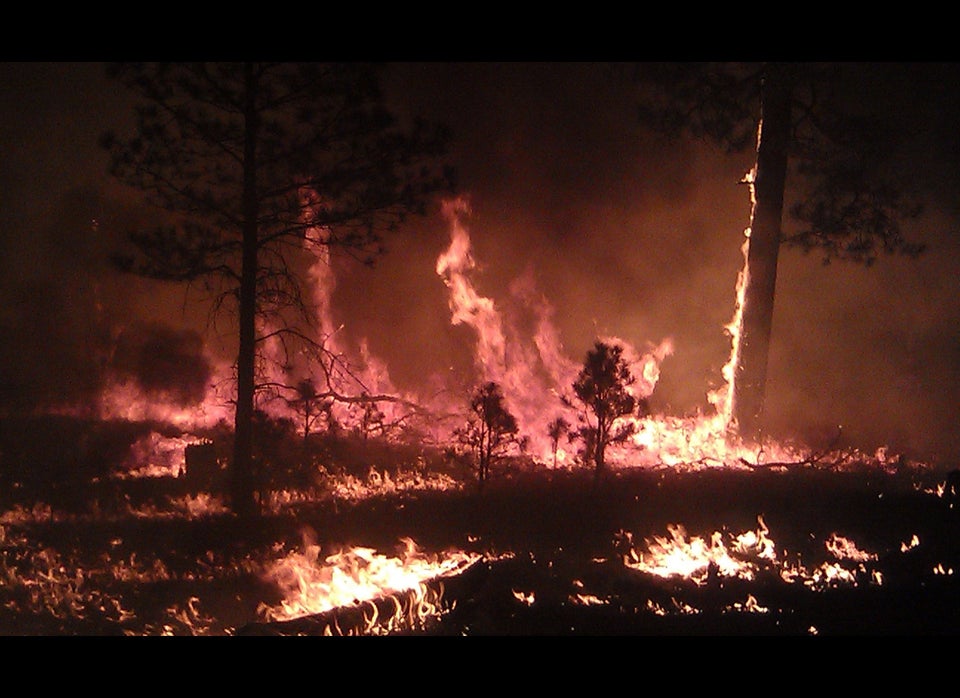Decades after a mysterious swastika formation was discovered in a German forest, questions remain over the origins of such patterns rumored to have been planted across the country.
The swastika symbol in the German forest near Brandenburg was first noticed by accident. The Nazi formation -- created from a patch of about 140 larch trees -- was discovered in 1992 by a landscaping company intern who was examining aerial photographs for irrigation lines, according to German site Der Spiegel.
The ingenious, albeit offensive, pattern was revealed in autumn as the larch trees were beginning to change color, contrasting starkly with the surrounding pines trees, which remained a lush green.
Throughout the years many people have attempted to unravel the mystery of this and other forest swastikas, but Der Spiegel notes that concrete answers remain elusive.
Officials first attempted to eliminate the Brandenburg swastika in the 1990s, according to Reuters. Displaying a Nazi symbol is illegal in the country, so workers chopped down the trees, but they eventually grew back. In 2000, German officials made a second attempt to destroy the symbol, using chain saws to cut 25 of the trees down to nubs.
"The explosive nature of this Nazi pattern in the trees had to be defused," Jens-Uwe Schade, spokesman for the Brandenburg environment ministry, said at the time. "We have now cut down 25 trees and that will hopefully eliminate the problem."
The BBC reported that the trees forming the swastika may have been planted as a World War II-era birthday gift to Adolf Hitler, but Der Spiegel notes another theory suggests the formation was planted as a thank you to the Reich Labor Service for building a nearby village's street.
Meanwhile, reports of other swastika forests have become part of the local lore. In the German town of Wiesbaden-Naurod, for example, rumors persist of a giant swastika shaped during the era of national-socialism. And as recently as 2006, The New York Times reported on the so-called Eki Naryn swastika, a 600-foot (across) tree swastika near the edge of the Himalayas in Kyrgyzstan.
In this case, too, there are conflicting theories. Some say that German prisoners of war planted the trees to get back at their Soviet captors, while others maintain Kyrgyz laborers were tricked into planting the swastika by a Nazi-sympathizing supervisor in the 1940s, according to The Times. Adding to the confusion, a local guide told the outlet that he remembers learning that the trees were planted as a show of goodwill between Stalin and Hitler in the 1930s.
No matter the origin, the fate of such formations may depend on whether local officials believe the forest swastikas are harmless or offensive. According to The Times, Kyrgyz locals seemed to be split on whether or not to keep the trees -- a marked difference from the Brandenburg officials, who were worried the forest might become a neo-Nazi shrine.
"We can only hope that we cut down enough trees this time to eliminate the relic," Brandenburg environment ministry spokesman Schade previously told Reuters.
